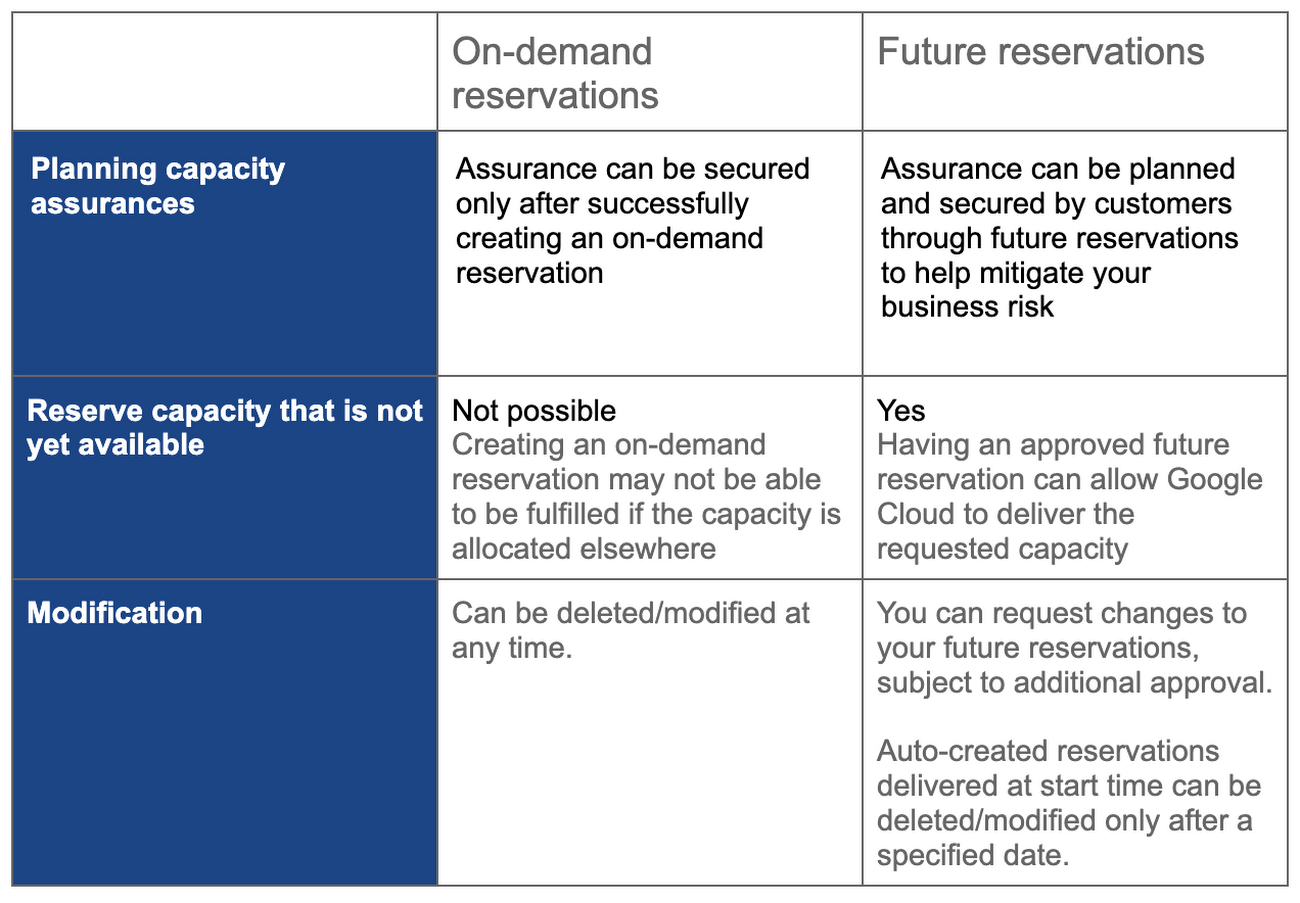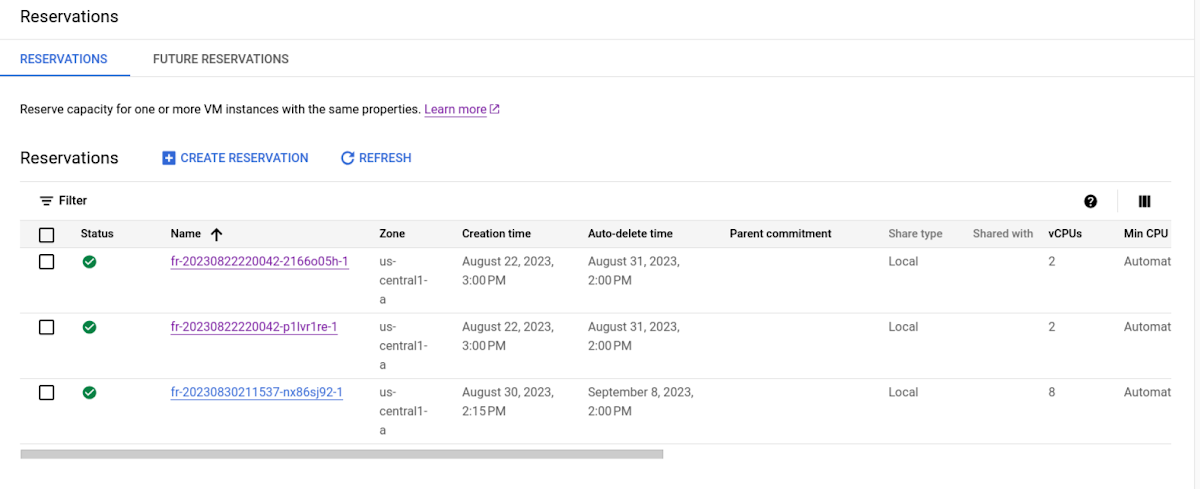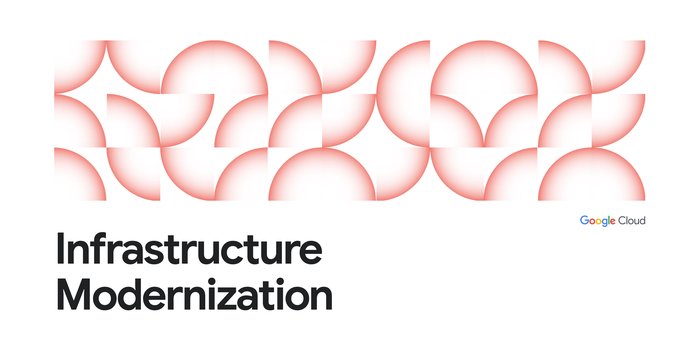How Compute Engine future reservations can help you get the capacity you need
Swati Tiwari
Product Manager, Google Compute Engine
Chris Brown
Global Technical Manager, Google Cloud Capacity
Ever wondered how to obtain cloud capacity in advance of an important upcoming event — a sales promotion, holiday shopping period, game launch or your financial year-end closing? Or perhaps you anticipate needing compute capacity to perform a job like onboarding onto Compute Engine, migrating from one machine family or cloud region to another, or securing access to GPU-based accelerators or memory-optimized machines. Now, with Compute Engine’s new future reservation feature in public preview, you can request compute capacity for a future date, easily, and with a high degree of confidence.
With future reservations, you can request capacity via the Google Cloud console, API or CLI with Compute Engine, and secure the capacity you need for a planned and expected scale-up event. Future reservations can provide:
Strong assurances for requested capacity - By signaling your request ahead of time, you gain confidence that your capacity can be there when you need it. This request allows Google Cloud to reserve resources for you and is prioritized over on-demand requests. By planning ahead and creating future reservations in advance, you can reduce the number of things you have to worry about closer to your business-critical event.
Self-service capability - You and your team can directly create future reservations via the console, API or CLI, specifying exactly what, where, and by when you need the capacity, and receive a request approval from Google Cloud. This can reduce delays or potential errors from consolidating your needs across multiple teams and then conveying them to account teams.
Reduced infrastructure overhead - Future reservations are applicable to existing running VMs and, once approved, automatically create any additional reservations in your project on the specified future start-time. This process can reduce the effort and expense that your infrastructure team would otherwise need to manually create reservations in advance of your critical event.
Here is a quick summary of key differences between on-demand and future reservations.


What customers are saying about future reservations
“Future reservations enabled us to secure access to A2 VMs [powered by NVIDIA A100s]... We leveraged future reservations to reduce any capacity risk and hence impact to our timeline. With future reservations, we were able to save time and money we would have spent in having to pre-spin the capacity to meet our critical timeline. We liked the ability to self-service and directly get responses to our capacity requests. This saved us enormous amounts of time and is truly a game changer.” - Matthieu Toulemont, Senior Machine Learning Engineer, PhotoRoom
“We used future reservations to help us with capacity planning to ensure we’d have the resources to fully support our first launch of an open beta product in select countries. Using future reservations gave us better experience with capacity management at scale, allowing us to incrementally acquire hardware resources without any back and forth with support when we tried requesting all of the capacity at once. This system works great for both parties and significantly reduces our operational overhead for reserving compute, freeing us up to focus on making sure the launch was a success.” - Eli Tran-Johnson, Senior Systems Engineer, Anthropic
Understanding future reservations
Future reservations are not just an on-demand reservation scheduled to start at a future start time. It is a capacity request that is reviewed by Google Cloud. Once approved, future reservations deliver capacity by auto-creating reservations in your project and begin the billing cycle at that reservation time.
You create a future reservations request by specifying the total number of VMs you expect to use for a machine type in a zone at the future start time, also indicating the end time. The chances of approval may be higher for future reservation requests that are for longer duration. Refer to the documentation for additional guidance.
For future reservations, you need to specify the total count of VMs of a machine type in that zone; any existing usage or reservations will count towards this delivery. If usage is already at the amount specified at start-time, the reservation will cover that usage without delivering any net-new incremental capacity.
You can choose to set auto-delete settings to delete the reservations at the end date or a later date, or you can keep the reservations around for as long as you want. You can also specify future reservations to be shared with other projects, to share capacity among the specified projects.
After you submit your future reservation request, your request is sent to Google Cloud for review and approval. The request is reviewed to ensure the request can be fulfilled with high confidence in light of other commitments. Once approved and during the “lock period” — a period in which you can't update or delete the request — Google Cloud will start the necessary steps required to reserve the capacity to fulfill your need.
As you get closer to your event, you may realize that you need more VMs than you initially thought, or that you need a different machine type. After approval and also during the lock period, you can still propose changes to your approved future reservations. Change requests are also subject to review and may or may not be approved based on the impact of supporting them. If proposed changes are declined, your previously approved future reservations will remain in effect.
To deliver capacity approved for future reservations, Google Cloud delivers created reservations in your project that are visible under the on-demand reservations tab. You can identify these created reservations from your created on-demand reservations by looking for the prefix you specified during future reservation creation.




Get started with future reservations today
Managing a business-critical event can be stressful. With future reservations, now you can plan ahead and have one less thing to worry about. We designed future reservations to make it easy for you to get capacity when you need it in a way that’s self-service and predictable. For more details on how to use future reservations and to get started, refer to this documentation.



